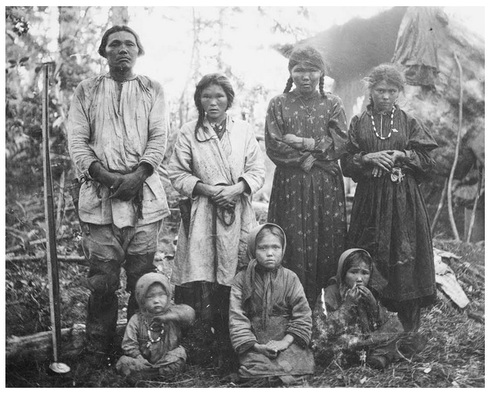Yesterday I wrote about the incident in the Dyatlov Pass and mentioned the Mansi people. However, I've never heard or read about them until now, so let's dig in!
Mansi (referred to in the past as Voguls) are an endangered indigenous people living in Khanty–Mansia, an autonomous okrug (an administrative division of Slavic states) within Tyumen Oblast in Russia. They speak Khanty and Mansi languages, which have co-official status with Russian.
Together with the Khanty people (another indigenous folk from that region), the Mansi are politically represented by the Association to Save Yugra, an organisation founded during the Perestroika of the late 1980s. This organisation was among the first regional indigenous associations in Russia.
The ancestors of Mansi people populated the areas west of the Urals, and Mansi findings have been unearthed in the vicinity of Perm. In the first millennium BC, they migrated to Western Siberia where they assimilated with the native inhabitants. According to others they are originated from the south Ural steppe and moved into their current location about 500 AD.
The Mansi have been in contact with the Russian state at least since the 16th century when most of western Siberia was brought under Russian control by Yermak Timofeyevich. Due to their higher exposure to Russian and Soviet control, they are generally more assimilated than their northern neighbours, the Khanty.
In the 1960s, exploitation of the rich oil deposits of Khanty–Mansi Autonomous Okrug began, causing the Soviet Union's largest internal migration wave since the Second World War. This led to a dramatic marginalisation of the Mansi and Khanty who today constitute slightly more than one percent of the district's population.
Mansi (referred to in the past as Voguls) are an endangered indigenous people living in Khanty–Mansia, an autonomous okrug (an administrative division of Slavic states) within Tyumen Oblast in Russia. They speak Khanty and Mansi languages, which have co-official status with Russian.
Together with the Khanty people (another indigenous folk from that region), the Mansi are politically represented by the Association to Save Yugra, an organisation founded during the Perestroika of the late 1980s. This organisation was among the first regional indigenous associations in Russia.
The ancestors of Mansi people populated the areas west of the Urals, and Mansi findings have been unearthed in the vicinity of Perm. In the first millennium BC, they migrated to Western Siberia where they assimilated with the native inhabitants. According to others they are originated from the south Ural steppe and moved into their current location about 500 AD.
The Mansi have been in contact with the Russian state at least since the 16th century when most of western Siberia was brought under Russian control by Yermak Timofeyevich. Due to their higher exposure to Russian and Soviet control, they are generally more assimilated than their northern neighbours, the Khanty.
In the 1960s, exploitation of the rich oil deposits of Khanty–Mansi Autonomous Okrug began, causing the Soviet Union's largest internal migration wave since the Second World War. This led to a dramatic marginalisation of the Mansi and Khanty who today constitute slightly more than one percent of the district's population.
~Ally

 RSS Feed
RSS Feed